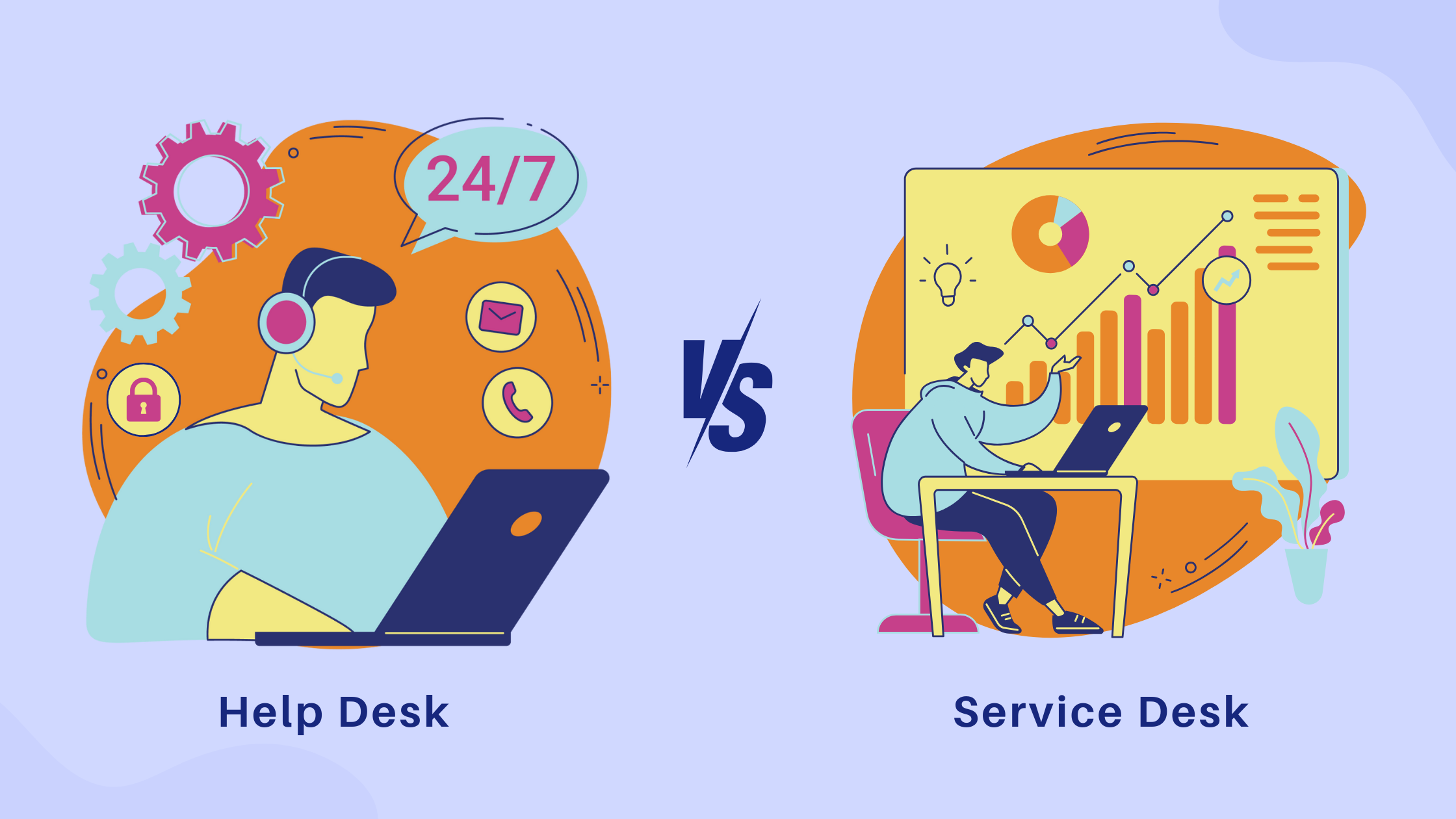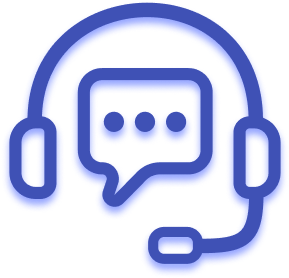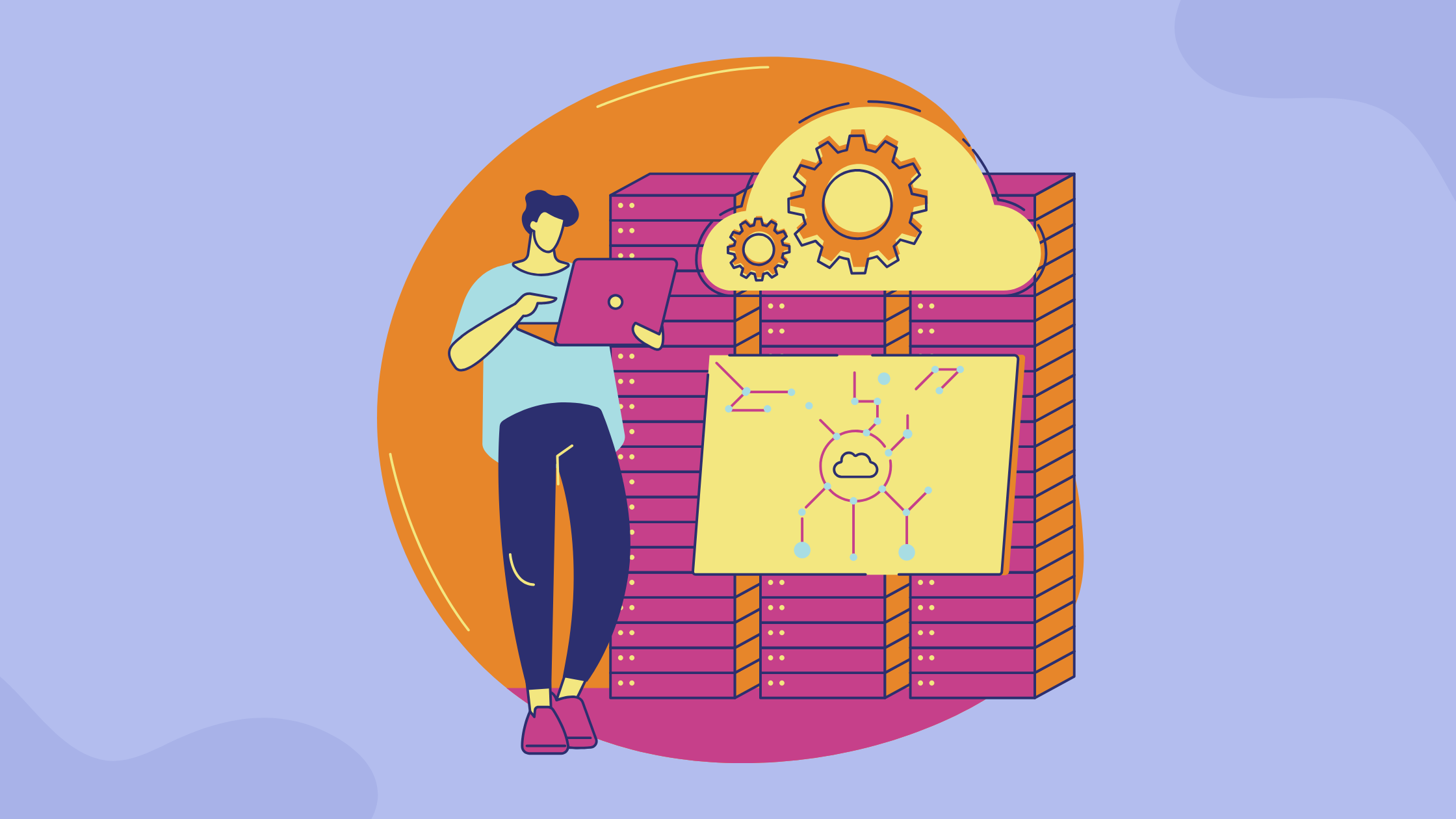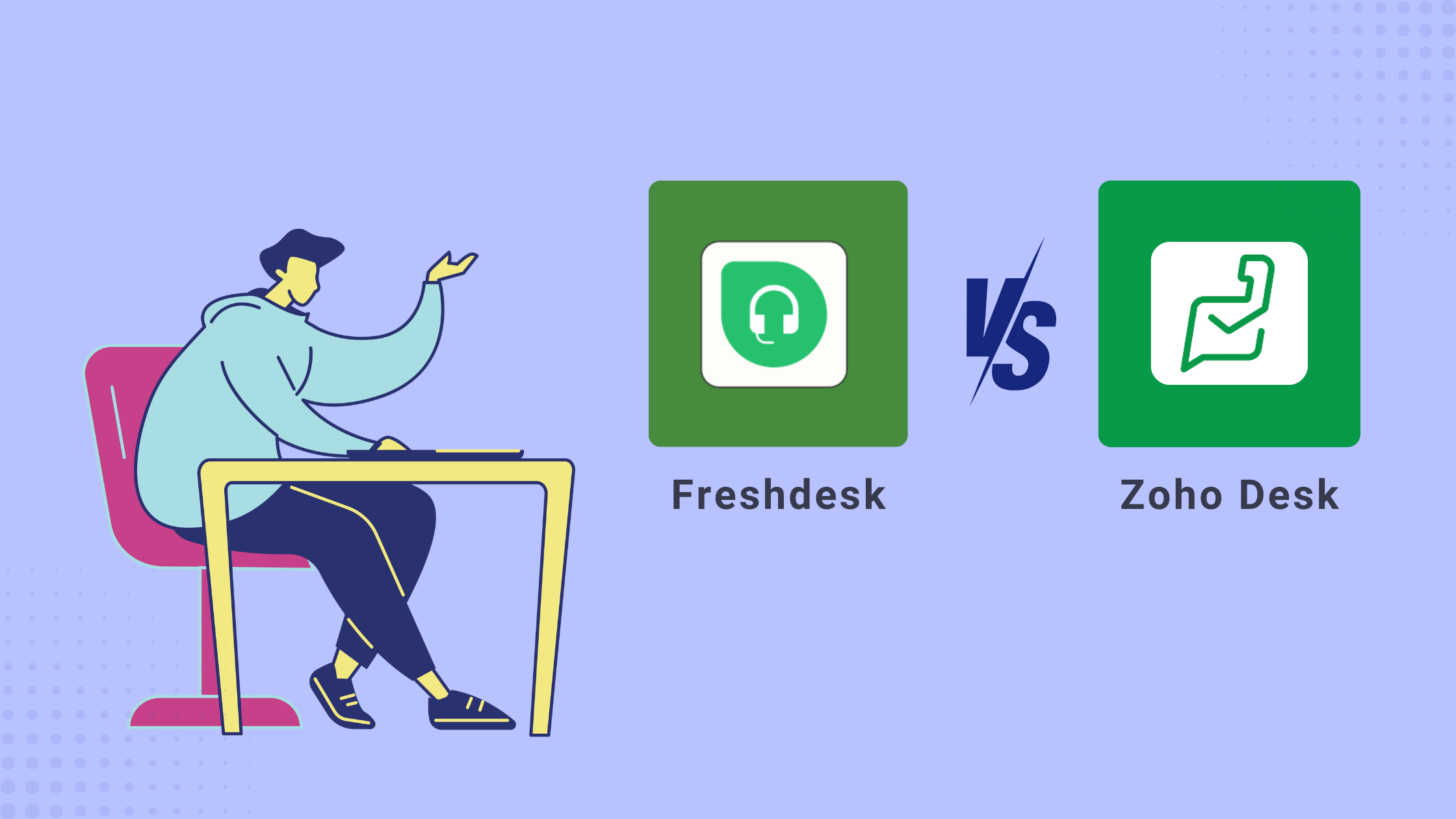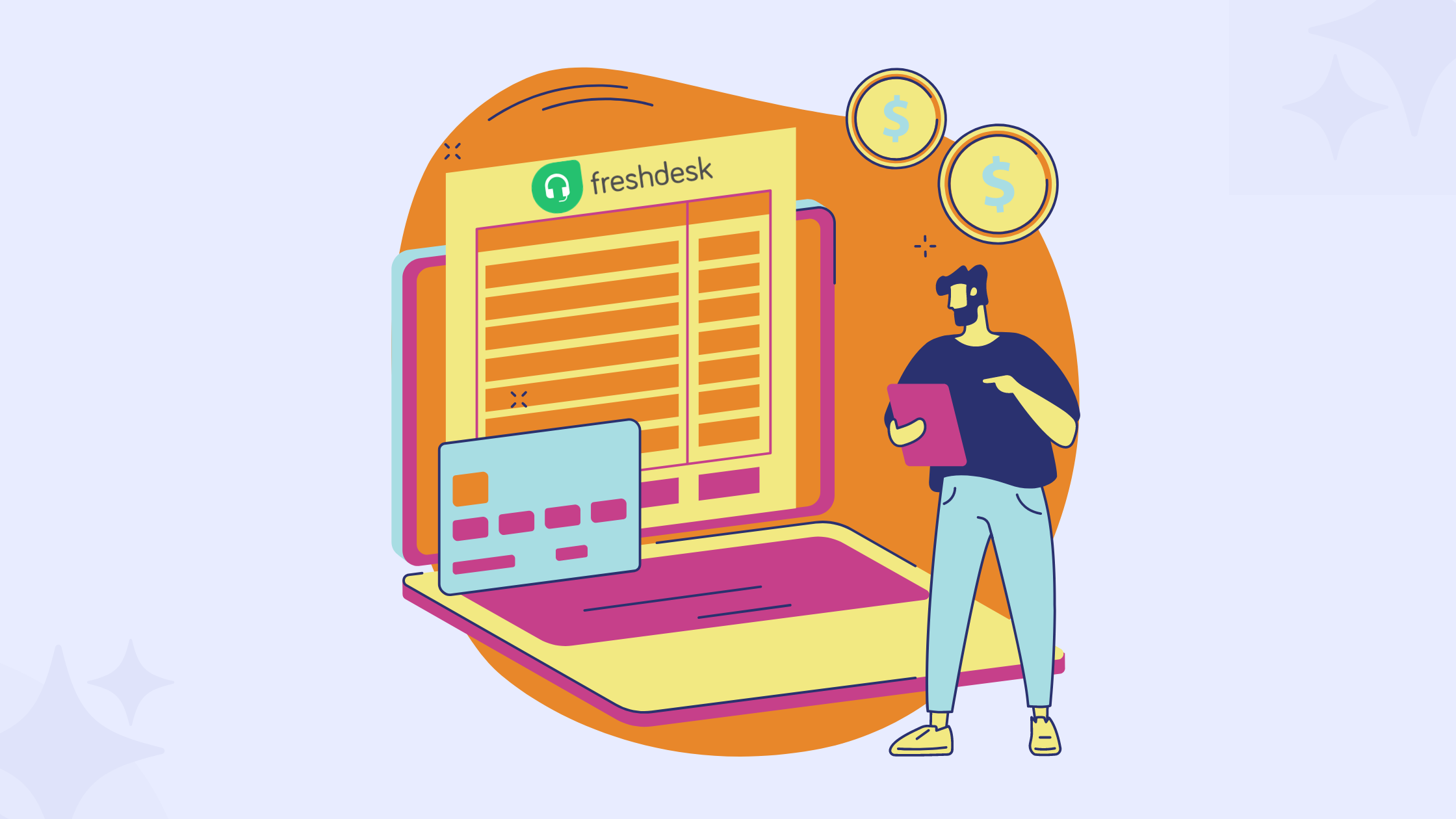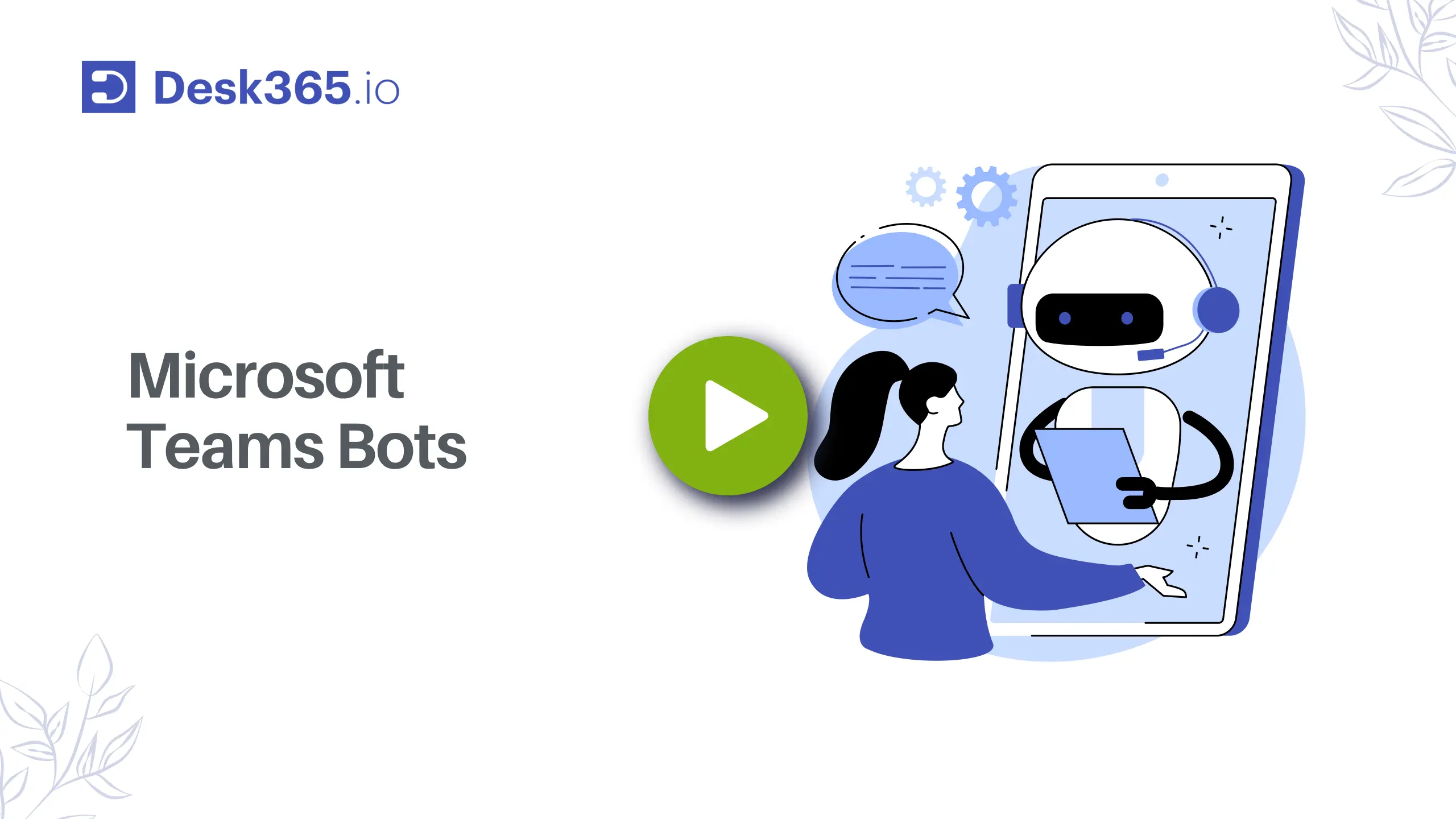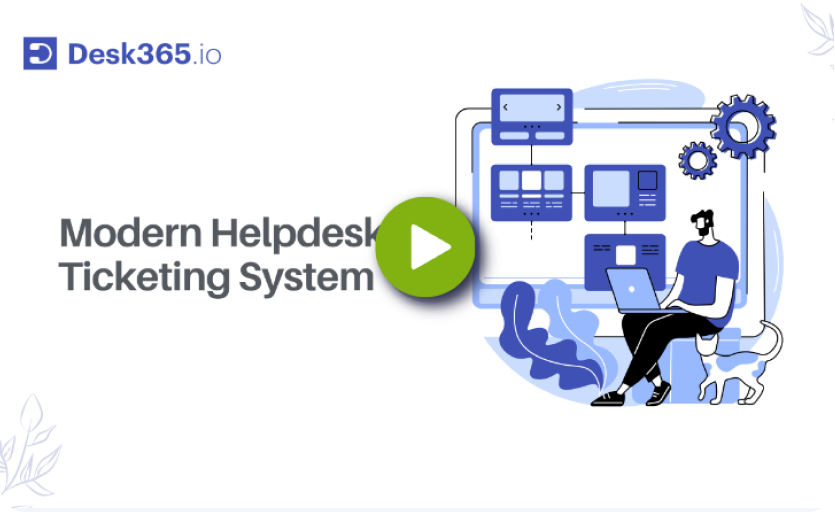Curious about the difference between a help desk vs service desk? While both of these IT tools seem similar at first glance, understanding their distinctions can significantly impact your customer support operations.
The help desk vs service desk debate often revolves around their different purposes and scopes. While both aim to provide efficient and high-quality IT support, the help desk typically focuses on addressing specific, immediate needs, whereas the service desk takes a more comprehensive approach to IT service management.
Let’s dive deeper into each of these functions to better understand their roles.
What is a help desk tool?
A help desk is a key component of IT support, specifically designed to address and resolve IT-related queries. When employees or customers encounter IT issues, they contact the help desk software, where these issues are logged as support tickets. The help desk then manages these tickets through processes like incident management, troubleshooting, and ultimately, resolving the issues.
Help desks serve as a single point of contact for users, ensuring that their problems are tracked and resolved efficiently. The main goal of a help desk is to provide timely responses and solutions, which contributes to higher customer satisfaction.
Help desks often include features like automation, Service Level Agreements (SLAs), and integrations with IT Service Management (ITSM) practices. These features make help desks effective tools for managing IT requests, ensuring that users get the support they need.
What is a service desk tool?
A service desk is also crucial for effective IT support but operates on a broader scale compared to a help desk. The service desk software serves as a single point of contact between end users and IT service providers, but it goes beyond just resolving issues—it manages the entire IT service lifecycle.
The service desk’s responsibilities include incident triage, where issues are categorized and prioritized to ensure that critical problems are addressed promptly. In addition to resolving issues, the service desk takes a systematic approach to identifying the root causes of incidents and developing long-term solutions.
Other key functions of a service desk include:
- Change management: This involves controlling and managing changes within the IT infrastructure to minimize disruptions and maintain stability.
- Knowledge management: Service desks create and manage resources that empower users to resolve issues independently, reducing the need for direct support.
- SLA management: Service desks ensure that IT services are delivered according to predefined standards and expectations, helping to maintain service quality.
- Reporting: Service desks generate reports to keep relevant stakeholders informed about important issues or changes, enabling better decision-making.
Recommended Reading: 8 Best Customer Self-Service Portals
What is ITSM?
IT Service Management, or ITSM, refers to the overall process of how IT teams deliver IT services to their customers. ITSM encompasses various functions, including incident management, IT asset management, problem management, and service request management. Compared to the service desk and help desk, ITSM has a much broader scope, overseeing the entire IT service delivery process from start to finish.
Recommended Reading: IT Support Levels: How L0, L1, L2, L3, L4 Support Tiers Work
Key differences between help desk vs service desk
Understanding the key differences between help desk vs service desk can help you determine which solution is best suited to your organization’s needs. Whether you need immediate technical support or a more comprehensive approach to IT service management, knowing what each option offers will guide you in making the right choice. Let’s break down the key differences based on several important aspects.
1. The scope
A help desk is designed to address technical issues as they arise, focusing on quick, immediate resolutions. Its primary goal is to ensure that users can quickly return to their normal activities by resolving issues like software glitches or hardware malfunctions.
In contrast, a service desk offers a more comprehensive approach to IT support. While it does handle issue resolution, it also focuses on broader initiatives like service management and optimization. The service desk looks beyond just fixing problems; it aims to improve the overall reliability, availability, and performance of IT services.
2. Focus area
The help desk’s focus is primarily on providing fast, direct assistance to users who need help with specific technical problems. For example, if a user encounters a software error, the help desk is there to troubleshoot and resolve the issue as quickly as possible.
The service desk, however, has a broader focus. It not only addresses user concerns but also manages and optimizes the IT services that support the entire organization. This includes ensuring that IT services are always available, reliable, and performing well. For example, the service desk might handle requests for new software installations, ensuring not only that the software is installed correctly but also that users know how to use it effectively.
3. Level of service
Help desks offer straightforward, immediate support. For example, if you forget your password, you can raise a ticket with the help desk, and they will assist you quickly to get you back on track.
Service desks, on the other hand, provide a broader range of IT services. If you need new software installed on your computer, the service desk will not only handle the installation but will also ensure that you understand how to use the software and that it integrates smoothly with other IT systems.
4. Activity
Help desks typically handle day-to-day IT issues. These might include troubleshooting printer problems, resetting passwords, or updating software. The focus is on resolving individual issues quickly so users can continue with their work.
Service desks, in addition to handling everyday IT problems, also manage more complex requests. This might include processing requests for new hardware, overseeing software upgrades, or providing guidance on how to use certain applications. Service desks also ensure that these activities align with the organization’s IT policies and procedures.
5. Key metrics
Help desks focus on metrics related to how quickly and effectively they resolve issues. Key performance indicators might include First Contact Resolution (FCR), CSAT – Customer Satisfaction Scores, and the number of unresolved tickets or ticket backlogs.
Service desks, however, track a wider range of metrics. They not only look at issue resolution times but also monitor Service Level Agreements (SLAs) to ensure services are delivered as promised. They might also track the number of incidents resolved, the frequency of recurring incidents, and other metrics related to the overall health of IT services.
Recommended Reading: 12 Help Desk Metrics to Improve Customer Support
6. Skills required
Help desk support agents typically need a basic diploma or degree in IT, along with certifications like CompTIA IT Fundamentals. Key skills include a solid understanding of common hardware and software issues, the ability to communicate technical concepts in simple terms, and the patience to handle user queries effectively.
Service desk support agents generally require a bachelor’s degree in IT or a related field. They need a deeper understanding of IT processes and complex systems, along with strong relationship-building skills. These agents must be capable of managing a wide variety of tickets, coordinating with other departments, and effectively handling change management within the IT infrastructure.
7. Cost and maintenance
Help desks are generally more cost-effective, with major expenses typically related to staffing and communication tools. Maintenance costs are relatively low, mainly involving software updates and staff training.
Service desks, however, are more expensive to operate. This is due to their broader range of services and the need for more advanced IT service management software. In addition to the costs associated with a help desk, service desks also require more investment in integration tools and processes that connect IT services with other business functions.
8. Tools used
The tools used in a help desk are relatively straightforward. These tools allow users to report issues, and agents can track these issues until they are resolved. Additional features, such as omnichannel support and access to a knowledge base, help to streamline the resolution process.
Service desks, on the other hand, use more advanced tools that can automate certain processes and integrate with other business applications. These tools enable a seamless connection between IT services and other business operations, helping to improve the overall efficiency and effectiveness of IT support.
Recommended Reading: 20 Free IT Ticket Templates for Faster Response
What features should you look for in a help desk and a service desk?
When choosing a help desk solution or service desk solution, it’s important to consider the features that will help your team work more efficiently and effectively. Here’s a detailed look at the key features to look for:
Ticket assignment or workload allocation
One of the most crucial features of a help desk or service desk is the ability to automatically assign tickets to support agents. Automated ticket assignment ensures that tickets are distributed evenly among team members, either in a cyclic order or based on their current workload. This feature helps prevent any one agent from being overwhelmed and reduces delays in providing the first response to a support request.
Recommended Reading: How does Ticket Routing help in Customer Service?
Web form or web widget
A web form or web widget is a simple and effective way for users to submit support tickets directly from your website. This feature makes it easier for customers to reach out for help, and it streamlines the process for your support team to receive and respond to requests.
When selecting a help desk or service desk solution, look for one that offers a customizable web form or widget. This tool allows users to submit tickets directly from your webpage, ensuring that support agents can start resolving issues more quickly.
SLA management
Service Level Agreements (SLAs) are vital for holding support agents accountable to resolve tickets within a specific timeframe. A robust help desk or service desk tool should allow you to create and manage SLAs, including setting business hours, configuring reminders, and establishing escalation rules.
If an SLA breach is about to occur, the system should alert managers immediately so they can take action to resolve the issue before it affects the customer experience. It should also include the ability to pause SLAs when necessary, ensuring that your support team meets the agreed-upon response times.
Automation
Automation is a powerful feature that can significantly improve the efficiency of your support team. Look for a help desk or service desk solution that allows you to automate various workflows, such as ticket creation, updates, or time-based triggers.
By automating repetitive tasks, you can free up your support team to focus on more complex issues, ultimately saving time and reducing the likelihood of human error. Desk365 offers extensive automation capabilities, helping you streamline your support processes and allowing your team to work more efficiently.
Reporting & analytics
To continuously improve your support services, it’s essential to have access to detailed reporting and analytics. The right help desk or service desk solution should provide tools to track and monitor your support agents’ performance, as well as the overall efficiency of your support operations.
Look for features that allow you to create reports based on ticket trends, response times, resolution times, and other key metrics. Additionally, the ability to generate and analyze customer satisfaction surveys after tickets are closed can provide valuable insights into your team’s performance.
Security
Security is a top priority for any business, especially when dealing with sensitive customer data. When choosing a help desk or service desk solution, make sure it offers strong security features to protect your information. Check for security compliance and ensure that the software has a robust privacy policy in place.
Why wait? Start efficient IT management today!
Tips for choosing your help desk or service desk
Selecting the right help desk or service desk solution for your business is a crucial decision that can greatly impact your operations and customer satisfaction. Here are some detailed tips to help you make the best choice:
1. Identify your use case
The first step in choosing a help desk or service desk is to clearly define how you intend to use it. Different businesses have different needs, so it’s important to identify whether you need the tool for IT support, HR, retail, or another specific function.
Understanding your specific use case will help you choose a tool that is tailored to your business needs, ensuring you get the most out of your investment.
2. Consider the cost and ROI
Cost is always a significant factor when implementing new tools in your business. When evaluating a help desk or service desk solution, consider not only the initial setup costs but also the ongoing expenses such as licensing fees, maintenance, and training.
It’s also important to assess the return on investment (ROI). A more expensive tool might offer advanced features that significantly improve your team’s efficiency, leading to better customer satisfaction and potentially higher revenue. On the other hand, a more affordable option might still meet your needs without stretching your budget. Calculate the potential ROI to ensure that the tool you choose will provide value over time.
Recommended Reading: Zendesk Pricing 2025: The Complete Guide
3. Ease of setup and flexibility
Another key consideration is how easy the help desk or service desk is to set up and use. You want a solution that can be implemented quickly without requiring extensive training or technical expertise. This ensures that your team can start using it right away with minimal disruption to your operations.
Additionally, think about the future. Choose a tool that is flexible and scalable, meaning it can grow with your business. As your company expands, your help desk or service desk should be able to accommodate an increasing number of users, tickets, and more complex workflows without needing a complete overhaul.
Recommended Reading: How to Set Up a Help Desk: A Step-by-Step Guide and Checklist
4. Evaluate the user experience
The user experience is critical for both your support agents and your customers. A tool that is intuitive and easy to navigate will reduce the learning curve for your team, allowing them to focus on resolving issues rather than struggling with the software. Look for a system that offers a clean, user-friendly interface, along with customizable options that allow you to tailor the experience to your specific needs.
For your customers, ensure the tool provides a seamless experience, whether they’re submitting tickets through a web form, web widget, or via email. The easier it is for them to get help, the more satisfied they will be with your service.
5. Integration capabilities
Your help desk or service desk should integrate well with other tools and systems you’re already using. Whether it’s your CRM, email platform, or project management tools, seamless integration ensures that data flows smoothly between systems, helping your team work more efficiently.
Look for a solution that offers robust integration options, so you can connect all your essential business applications. This will help streamline processes, reduce duplication of efforts, and provide a more cohesive experience for both your team and your customers.
6. Support and training
Finally, consider the level of support and training provided by the vendor. Even the best tools can have issues or require updates, so it’s important to choose a provider that offers good customer service. Look for vendors that provide comprehensive training resources, such as tutorials, documentation, and webinars, to help your team get the most out of the tool.
In summary, while both help desks and service desks are vital for IT support, they serve different purposes. A help desk focuses on resolving immediate issues and providing direct support to users, while a service desk takes a more holistic approach, managing the entire IT service lifecycle and ensuring that IT services are delivered effectively. Understanding these differences can help you choose between service and help desks as per your organization’s needs.
Frequently asked questions
A help desk focuses on resolving immediate IT issues, while a service desk takes a broader approach to IT service management, including change and knowledge management.
If you need quick issue resolution, a help desk is ideal. For comprehensive IT service management, a service desk is the better choice.
Automation, SLA management, reporting, and omnichannel ticketing are critical features for efficient help desk operations.
Desk365 offers intuitive tools like automation, customizable widgets, robust SLA management, etc. to streamline IT support and enhance productivity.
